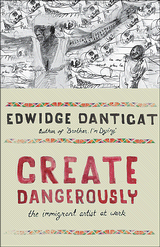
Who shall live and who shall die
Who at the measure of days and who before
Who by fire and who by water
Who by the sword and who by wild beasts
Who shall have rest and who shall go wandering
Who shall be brought low and who shall be raised high.
Mitchell James Kaplan’s debut novel, which takes its name from the words of this sacred Hebrew piyyut , follows the fortunes of one man at a time of great social and political turbulence. 15th century Spain was the epicenter of some world-changing tremors – the conquest of Muslim-dominated Granada by Queen Isabel; the establishment of the Inquisition to reinforce the power of the Church while displacing thousands of Muslims and Jews across the world, and- that most famous of nautical goof ups, Christopher Columbus’ ‘discovery’ of the New World .
Into these historical facts, Kaplan deftly weaves a story of a man caught in a crisis of faith. This is no ordinary man; Kaplan ambitiously chooses as his protagonist the powerful and charismatic Luis de Santángel, an influential member of the court, unscrupulous accomplice to King Ferdinand in his quest for power, and financier to the gamble that was Columbus’ quest for Asia. But Santángel was also a third generation converso, or New Christian-his forefathers having abandoned the Jewish faith - who was implicated in the murder of an Inquisitor and lost several members of his family to the Inquisition.
History shows that the conversos were never entirely accepted, their status as former Jews or Muslims always making them suspect .“You think you’re one of them…”, Santángel bitterly observes to his brother Estefan, a man who hides behind a boisterous show of Christian feeling. ”But neither you nor I shall ever be one of them, no matter how much we drink or take confession.”.
Kaplan interprets Santángel as a man whose revulsion at the horrors and hypocricy of the Inquisition gradually turn him from skeptical converso to covert Jew. (“ Where they see a conspiracy of New Christians,” he says, “I see… history. Shared history. And history, memories, how can you escape them?”) He turns to the comforting fold of his abandoned faith, secretly practicing Jewish rituals and studying ancient Hebrew texts with the help of a young scribe. When the scribe is betrayed and tortured by the Inquisition into confessing his ‘crimes’ and naming accomplices, Santángel has the Inquisitor murdered. He soon finds that his power and wealth are little protection, given his suspect status as a New Christian. He is arrested, before his proximity to King Ferdinand comes to his aid, but is helpless to prevent the punishment of his son and the torture and murder of his brother.
Running parallel to Santángel’s story is that of Judith Migdal, a young woman living in the Jewish quarter of the Muslim kingdom of Granada. Judith, a devout Jew, defies social convention by refusing marriage and single handedly taking over her murdered brother’s business and the care of his family. Santángel meets her on a visit to the vizir of Granada, but theirs is a romance doomed; Santángel is arrested, while the Christian occupation of Granada turns Judith and thousands of Jews like her into homeless refugees. Also playing a role in Santángel’s persecution is the Toledoth Yeshu, a Hebrew scroll of unknown origins, that Colon gives to him. Suggesting an alternate version to Jesus’ origins, the scroll ,though hardly comparable to the hate mongering of anti-Semitic propaganda like the Fortalitium Fidei ,has often been misrepresented as anti–Christian, and becomes, in this book, a powerful stimulus in Queen Isabel’s fanatical desire to conquer Granada.
The story moves seamlessly between theological debate, moments of intimacy and graphic violence, with the odd burst of florid prose'. Kaplan’s rendering of Santángel reminded me of Thomas Cromwell, flawed star of ‘Wolf Hall’, Hilary Mantel’s literary juggernaut – amoral, conniving, as much a power hungry opportunist as the monarch he supports, then blackmails. In Kaplan’s assured hands, however, Santángel is also an intriguing character, tortured by his love and the consequences of his beliefs. By contrast, Kaplan’s vision of Colon/ Columbus is far more flattering – devious, yes, in his single-minded dedication to his vocation, but also intellectually curious, and tolerant of cultures foreign to his own (in a sub-plot, he secretly supports Judith’s business at a time when anti-Semitic feeling runs particularly high).
But the character who stands out as truly heroic is one who starts off as an underdog - Estefan, a man who feigns an affinity to primitive Christian rituals, only to openly defy the Inquisition when his young nephew is arrested. “No one cares a straw what you believe, Luis,” Estefan tells his brother, rather prophetically, at the beginning of the book. “No one cares what I believe, in the black dungeon of my heart. That’s the outrageous joke behind this madness.” And later, “Where’s the other cheek?” he taunts the men arresting him for a drunken tirade against Torquemada’s ‘splenetic choirboys’ and their zeal for violence.”Where is He?” Needless to say, the Inquisition’s response is brutal.
‘By Fire, By Water’ makes for compulsive reading with its lucid prose and strong characters, in a narrative where the research never overpowers the story.
Thanks to Mitchell James Kaplan for sending Bookblah a review copy of his book.















